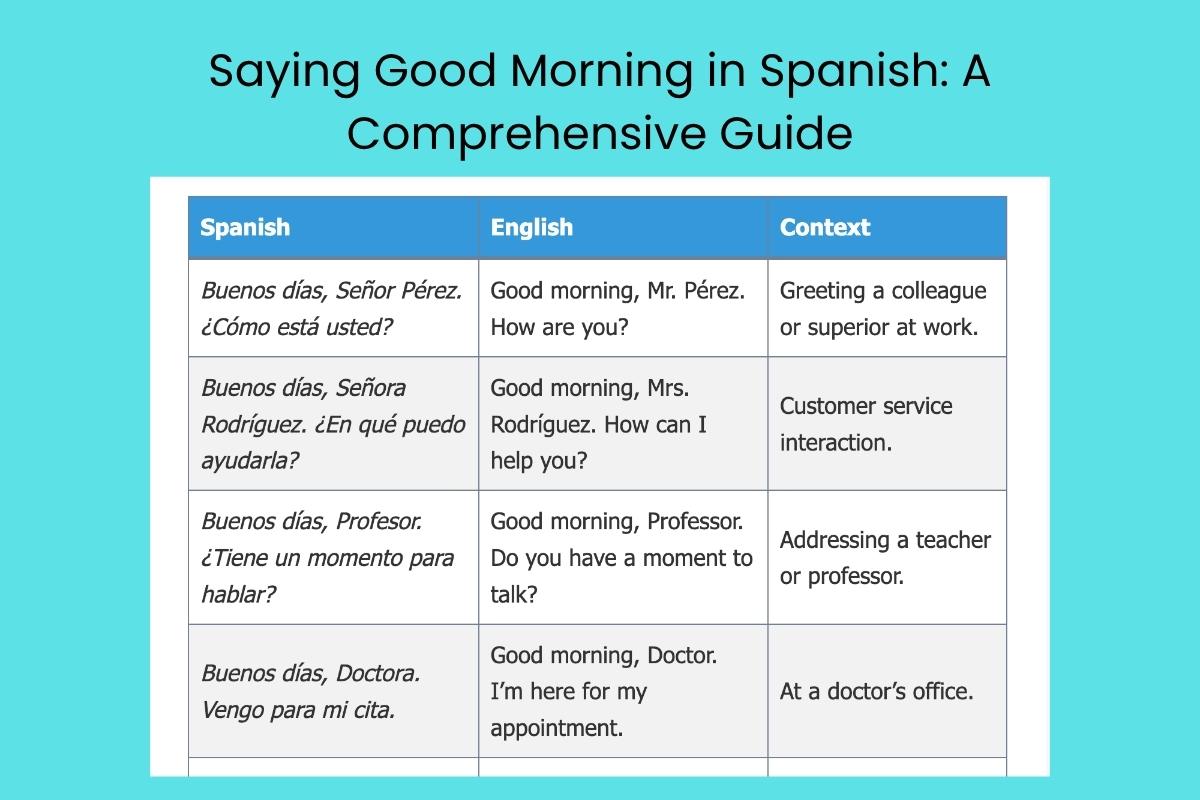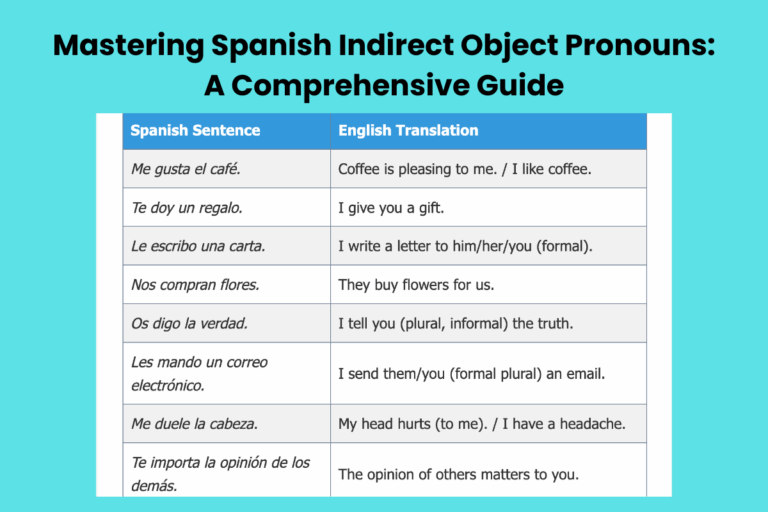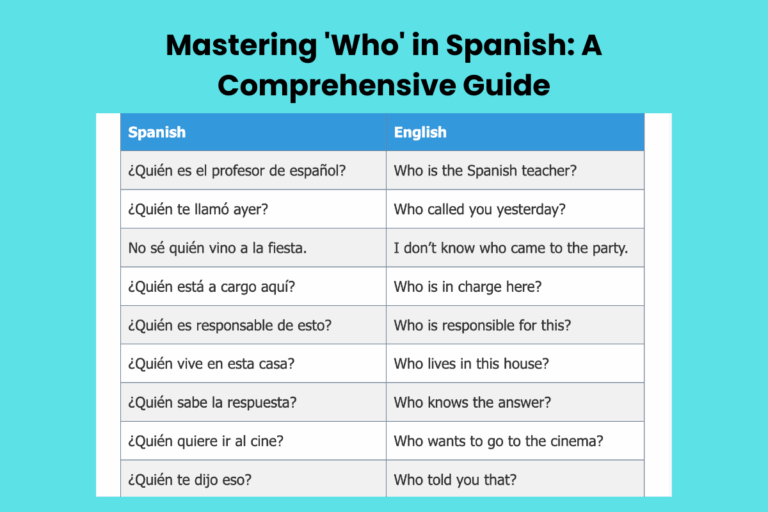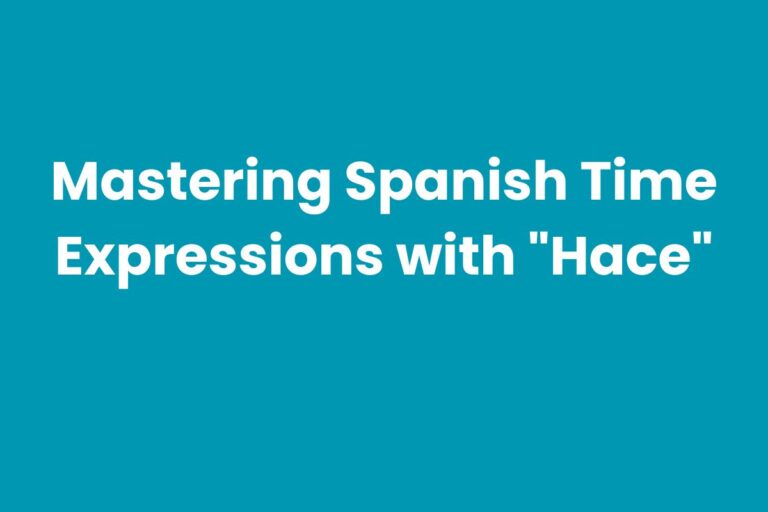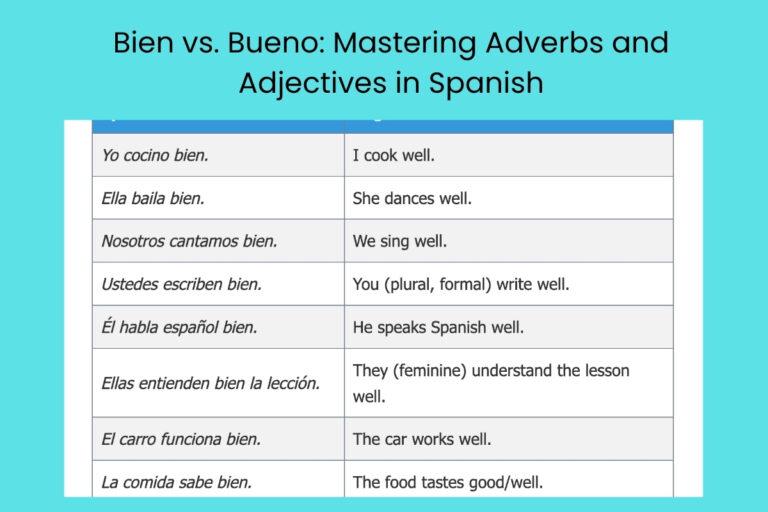Saying Good Morning in Spanish: A Comprehensive Guide
Learning how to say “good morning” in Spanish is a fundamental step in mastering the language. It’s more than just a greeting; it’s a cultural bridge that opens doors to meaningful interactions. Understanding the nuances of “buenos días” and its variations allows you to communicate effectively and respectfully in Spanish-speaking environments. This guide is designed for beginners and intermediate learners who want to confidently greet others and enhance their overall Spanish proficiency.
This article provides a thorough exploration of how to say “good morning” in Spanish, covering definitions, structural breakdowns, usage rules, common mistakes, and practice exercises. Whether you’re planning a trip, studying Spanish, or simply interested in expanding your linguistic skills, this guide will equip you with the knowledge and confidence to greet others with ease. By the end of this article, you’ll be able to use “buenos días” correctly and understand its cultural significance.
Table of Contents
- Definition of “Buenos Días”
- Structural Breakdown
- Variations and Related Greetings
- Examples of “Buenos Días” in Use
- Usage Rules and Etiquette
- Common Mistakes to Avoid
- Practice Exercises
- Advanced Topics
- Frequently Asked Questions (FAQ)
- Conclusion
Definition of “Buenos Días”
Buenos días is the standard Spanish greeting for “good morning” or “good day.” It is used from sunrise until noon, or sometimes even until lunchtime. The phrase is composed of two words: buenos, which means “good,” and días, which means “days.” It’s a plural form, as the greeting is meant to encompass the entire morning period. Understanding its components helps grasp its meaning and usage.
The term is a polite and widely accepted greeting in all Spanish-speaking countries. It’s appropriate for both formal and informal situations, making it a versatile phrase for any occasion. Whether you’re addressing a stranger, a colleague, or a friend, buenos días is a safe and respectful way to start a conversation. Its simplicity and universality make it a fundamental part of any Spanish learner’s vocabulary.
Structural Breakdown
The phrase buenos días follows a simple grammatical structure. Buenos is an adjective that modifies the noun días. In Spanish, adjectives typically come after the noun they modify, but in this case, and with many common expressions, the adjective precedes the noun. The word buenos is the plural, masculine form of the adjective bueno (good). This is because días is a masculine, plural noun.
Let’s break it down further:
- Buenos: Adjective (plural, masculine) meaning “good”
- Días: Noun (plural, masculine) meaning “days”
The agreement in gender and number between the adjective and the noun is crucial in Spanish grammar. Since días is masculine and plural, bueno must change to buenos to match. This consistency is essential for correct grammar. If you were greeting someone in the afternoon (buenas tardes) or evening (buenas noches), the same principle applies, with tardes and noches being feminine plural nouns.
Variations and Related Greetings
While buenos días is the most common way to say “good morning” in Spanish, there are variations and related greetings you might encounter or use depending on the context and region. Understanding these alternatives can enrich your vocabulary and make your Spanish sound more natural.
Formal vs. Informal Greetings
In more formal settings, you might add a title of respect after buenos días. For example:
- Buenos días, Señor (Good morning, Sir)
- Buenos días, Señora (Good morning, Madam)
- Buenos días, Señorita (Good morning, Miss)
In informal settings, you can simply say buenos días, or use a more casual greeting like hola (hello) followed by buenos días. Using titles of respect demonstrates politeness and is particularly important when addressing elders or people in positions of authority.
Regional Variations
While buenos días is universally understood, some regions might have their own preferred greetings. However, these are more general greetings and not specific to “good morning”:
- ¿Qué tal? (What’s up?) – Common in Spain.
- ¿Cómo estás? (How are you?) – Used throughout the Spanish-speaking world.
- ¿Qué onda? (What’s up?) – Common in Mexico and some parts of Latin America.
These greetings can be used at any time of day, including the morning. It’s important to note that these are less formal and more suitable for casual conversations with friends or acquaintances.
Other Time-of-Day Greetings
It’s also helpful to know the greetings for other times of the day:
- Buenas tardes (Good afternoon/Good evening) – Used from noon until sunset.
- Buenas noches (Good evening/Good night) – Used from sunset until sunrise.
Understanding the appropriate time to use each greeting is essential for effective communication. For example, using buenas tardes at 8 AM would sound strange, just as using “good evening” in the morning would in English.
Examples of “Buenos Días” in Use
To fully understand how to use buenos días, let’s look at various examples in different contexts. These examples will illustrate how to incorporate the greeting into everyday conversations.
Formal Settings
Here are some examples of using buenos días in formal situations:
| Spanish | English | Context |
|---|---|---|
| Buenos días, Señor Pérez. ¿Cómo está usted? | Good morning, Mr. Pérez. How are you? | Greeting a colleague or superior at work. |
| Buenos días, Señora Rodríguez. ¿En qué puedo ayudarla? | Good morning, Mrs. Rodríguez. How can I help you? | Customer service interaction. |
| Buenos días, Profesor. ¿Tiene un momento para hablar? | Good morning, Professor. Do you have a moment to talk? | Addressing a teacher or professor. |
| Buenos días, Doctora. Vengo para mi cita. | Good morning, Doctor. I’m here for my appointment. | At a doctor’s office. |
| Buenos días, Señor Juez. | Good morning, Judge. | Addressing a judge in court. |
| Buenos días, Embajador. Es un placer conocerle. | Good morning, Ambassador. It’s a pleasure to meet you. | Meeting an ambassador. |
| Buenos días, Director. Espero que esté bien. | Good morning, Director. I hope you are well. | Addressing a director of a company. |
| Buenos días, Comandante. Reportando a mi servicio. | Good morning, Commander. Reporting for duty. | In a military setting. |
| Buenos días, Su Majestad. | Good morning, Your Majesty. | Addressing royalty. |
| Buenos días, Padre. ¿Cómo está? | Good morning, Father. How are you? | Addressing a priest. |
| Buenos días, Inspector. Tenemos un problema. | Good morning, Inspector. We have a problem. | Addressing a police inspector. |
| Buenos días, Alcalde. Gracias por su tiempo. | Good morning, Mayor. Thank you for your time. | Addressing a mayor. |
| Buenos días, Presidente. Es un honor. | Good morning, President. It’s an honor. | Addressing a president. |
| Buenos días, Secretario. Necesito su firma. | Good morning, Secretary. I need your signature. | Addressing a secretary in a formal setting. |
| Buenos días, Gerente. Tengo una pregunta. | Good morning, Manager. I have a question. | Addressing a manager. |
| Buenos días, Consejero. Quisiera hablar con usted. | Good morning, Counselor. I would like to speak with you. | Addressing a counselor. |
| Buenos días, Senador. Es un gusto verle. | Good morning, Senator. It’s a pleasure to see you. | Addressing a senator. |
| Buenos días, Gobernador. ¿Cómo se encuentra? | Good morning, Governor. How are you? | Addressing a governor. |
| Buenos días, Decano. Necesito su aprobación. | Good morning, Dean. I need your approval. | Addressing a dean at a university. |
| Buenos días, Tesorero. Aquí está el informe. | Good morning, Treasurer. Here is the report. | Addressing a treasurer. |
Informal Settings
Here are some examples of using buenos días in informal situations:
| Spanish | English | Context |
|---|---|---|
| Buenos días, Juan. ¿Qué tal? | Good morning, Juan. What’s up? | Greeting a friend. |
| Buenos días, María. ¿Cómo amaneciste? | Good morning, Maria. How did you wake up? | Greeting a close friend or family member. |
| Buenos días, chicos. ¿Listos para la escuela? | Good morning, kids. Ready for school? | Parent greeting their children. |
| Hola, buenos días. ¿Todo bien? | Hello, good morning. Everything okay? | Casual greeting among acquaintances. |
| Buenos días, abuela. ¿Dormiste bien? | Good morning, grandma. Did you sleep well? | Greeting a grandmother. |
| Buenos días, hermano. ¿Qué planes tienes? | Good morning, brother. What plans do you have? | Greeting a brother. |
| Buenos días, cariño. Te preparé el desayuno. | Good morning, darling. I made you breakfast. | Greeting a loved one. |
| Buenos días, vecina. ¡Qué lindo día! | Good morning, neighbor. What a beautiful day! | Greeting a neighbor. |
| Buenos días, amigos. ¿Listos para la aventura? | Good morning, friends. Ready for the adventure? | Greeting friends before an outing. |
| Buenos días, profe. ¿Cómo está hoy? | Good morning, teacher. How are you today? | Greeting a teacher in a more casual setting. |
| Buenos días, compañeros. Empecemos el día con energía. | Good morning, colleagues. Let’s start the day with energy. | Greeting colleagues in a relaxed environment. |
| Buenos días, tía. ¿Qué tal la mañana? | Good morning, aunt. How’s the morning going? | Greeting an aunt. |
| Buenos días, primo. ¿Cómo va todo? | Good morning, cousin. How’s everything going? | Greeting a cousin. |
| Buenos días, abuelo. ¿Listo para el café? | Good morning, grandpa. Ready for coffee? | Greeting a grandfather. |
| Buenos días, mami. Te quiero mucho. | Good morning, mom. I love you very much. | Greeting a mother. |
| Buenos días, papi. ¿Cómo dormiste? | Good morning, dad. How did you sleep? | Greeting a father. |
| Buenos días, gente. ¡A disfrutar el día! | Good morning, everyone. Enjoy the day! | Greeting a group of people informally. |
| Buenos días, chicos. ¿Preparados para jugar? | Good morning, kids. Ready to play? | Greeting children before playtime. |
| Buenos días, amor. Eres lo primero que veo al despertar. | Good morning, love. You’re the first thing I see when I wake up. | Greeting a romantic partner. |
| Buenos días, solecito. ¡Qué alegría verte! | Good morning, sunshine. What a joy to see you! | Affectionate greeting. |
Business Settings
Here are some examples of using buenos días in business contexts:
| Spanish | English | Context |
|---|---|---|
| Buenos días, bienvenido a nuestra oficina. | Good morning, welcome to our office. | Receptionist greeting a visitor. |
| Buenos días, tengo una reunión programada con el Sr. López. | Good morning, I have a scheduled meeting with Mr. López. | Employee arriving for a meeting. |
| Buenos días, ¿en qué puedo servirle hoy? | Good morning, how can I help you today? | Salesperson greeting a customer. |
| Buenos días, les presento el informe trimestral. | Good morning, I present to you the quarterly report. | Presenting a report at a meeting. |
| Buenos días, colegas. Iniciemos la jornada. | Good morning, colleagues. Let’s start the day. | Starting a workday with colleagues. |
| Buenos días, ¿puedo ayudarle con su pedido? | Good morning, can I help you with your order? | Taking an order. |
| Buenos días, gracias por contactarnos. | Good morning, thank you for contacting us. | Answering a business call. |
| Buenos días, ¿tiene una cita previa? | Good morning, do you have a prior appointment? | Asking a visitor about an appointment. |
| Buenos días, estamos listos para comenzar la presentación. | Good morning, we are ready to start the presentation. | Beginning a presentation. |
| Buenos días, ¿cómo puedo asistirle hoy en su empresa? | Good morning, how can I assist you today in your company? | Offering assistance in a business setting. |
| Buenos días, ¿necesita ayuda para encontrar algo? | Good morning, do you need help finding something? | Assisting a customer in a store. |
| Buenos días, por favor, tome asiento. | Good morning, please take a seat. | Offering a seat to a visitor. |
| Buenos días, estamos aquí para resolver sus inquietudes. | Good morning, we are here to address your concerns. | Addressing customer concerns. |
| Buenos días, ¿puedo verificar su identificación? | Good morning, may I see your identification? | Checking identification at a business premise. |
| Buenos días, ¿en qué departamento desea ser conectado? | Good morning, which department would you like to be connected to? | Directing a call to a specific department. |
| Buenos días, estamos a su disposición para cualquier consulta. | Good morning, we are at your disposal for any inquiries. | Offering availability for inquiries. |
| Buenos días, ¿puede confirmar su número de referencia? | Good morning, can you confirm your reference number? | Confirming information with a reference number. |
| Buenos días, tenemos una oferta especial para usted hoy. | Good morning, we have a special offer for you today. | Informing a customer about a special offer. |
| Buenos días, me gustaría presentar a mi equipo. | Good morning, I would like to introduce my team. | Introducing a team. |
| Buenos días, ¿desea dejar un mensaje? | Good morning, would you like to leave a message? | Offering to take a message. |
Usage Rules and Etiquette
Using buenos días correctly involves understanding not just the words themselves, but also the cultural context in which they are used. Here are some key usage rules and etiquette tips:
- Time of Day: Use buenos días from sunrise until noon, or sometimes until lunchtime. After noon, switch to buenas tardes.
- Formality: In formal situations, use titles of respect (Señor, Señora, Señorita) after buenos días. In informal situations, you can omit the title or use a casual greeting like hola.
- Tone: Use a friendly and respectful tone. A smile and eye contact can enhance the greeting.
- Response: When someone greets you with buenos días, respond in kind. You can also add ¿Cómo está? (How are you?) to show interest.
- Context: Be mindful of the context. In a business setting, a more formal greeting is appropriate. With friends and family, a more casual greeting is fine.
Understanding these rules and etiquette tips will help you use buenos días appropriately and confidently in any situation. It’s not just about saying the words; it’s about conveying respect and warmth.
Common Mistakes to Avoid
Even with a simple greeting like buenos días, it’s easy to make mistakes, especially for beginners. Here are some common mistakes to avoid:
| Incorrect | Correct | Explanation |
|---|---|---|
| Bueno días | Buenos días | The adjective must agree in number (plural) with the noun. |
| Buenas días | Buenos días | Días is a masculine noun, so the adjective must be masculine. |
| Using buenas tardes in the morning | Using buenos días in the morning | Use the correct greeting for the time of day. |
| Forgetting titles of respect in formal situations | Using titles of respect in formal situations | Remember to add Señor, Señora, Señorita when appropriate. |
| *Buenos dia* | *Buenos días* | Missing the accent mark on *días* changes the pronunciation. |
| *Hola, bueno días* | *Hola, buenos días* | The adjective *bueno* must agree in number and gender. |
| Using *buenas noches* in the morning | Using *buenos días* in the morning | Incorrect use of time-specific greetings. |
| Responding with only *sí* | Responding with *buenos días* back | Proper etiquette is to reciprocate the greeting. |
| Ignoring someone who says *buenos días* | Acknowledging and responding to the greeting | Ignoring a greeting is impolite. |
| Using a very informal greeting in a formal setting | Using a formal greeting (e.g., *Buenos días, Señor*) | Matching the formality of the setting. |
By being aware of these common mistakes, you can avoid them and ensure your Spanish greetings are accurate and appropriate. Pay attention to the details and practice regularly to build confidence.
Practice Exercises
To reinforce your understanding of buenos días, here are some practice exercises. These exercises will help you apply what you’ve learned in different scenarios.
Exercise 1: Fill in the Blanks
Complete the following sentences with the correct form of the greeting.
| Question | Answer |
|---|---|
| 1. ________, Señor Gómez. ¿Cómo está? | Buenos días |
| 2. ________, María. ¿Qué tal? | Buenos días |
| 3. ________, Profesor. ¿Puedo hacer una pregunta? | Buenos días |
| 4. ________, clase. Vamos a empezar. | Buenos días |
| 5. ________, mamá. ¿Dormiste bien? | Buenos días |
| 6. ________, a todos. ¡Qué tengan un buen día! | Buenos días |
| 7. ________, jefe. Aquí está el informe. | Buenos días |
| 8. ________, vecinos. ¡Hermosa mañana! | Buenos días |
| 9. ________, niños. ¡A desayunar! | Buenos días |
| 10. ________, cariño. ¿Cómo amaneciste hoy? | Buenos días |
Exercise 2: Choose the Correct Greeting
Select the correct greeting for the given scenario.
| Scenario | Options | Answer |
|---|---|---|
| Greeting your teacher at 8 AM. | a) Buenas tardes b) Buenos días c) Buenas noches | b) Buenos días |
| Greeting a colleague at 10 AM. | a) Buenos días b) Buenas tardes c) Hola | a) Buenos días |
| Greeting your mother in the morning. | a) Hola b) Buenos días c) ¿Qué tal? | b) Buenos días |
| Greeting a customer at your store at 9 AM. | a) ¿Qué onda? b) Buenos días c) Buenas noches | b) Buenos días |
| Answering the phone at your office at 11 AM. | a) Buenas tardes b) Buenos días c) Hola | b) Buenos días |
| Meeting a new client at 9:30 AM. | a) ¿Cómo estás? b) Buenos días, Señor c) Buenas noches | b) Buenos días, Señor |
| Seeing your neighbor outside at 7 AM. | a) Buenas tardes b) Buenos días c) ¿Qué tal? | b) Buenos días |
| Starting a work meeting at 10:15 AM. | a) Buenas noches b) Buenos días, a todos c) Hola | b) Buenos días, a todos |
| Walking into a café at 8:45 AM. | a) Buenas tardes b) Buenos días c) ¿Qué onda? | b) Buenos días |
| Seeing your friend at school at 7:50 AM. | a) Buenas noches b) Buenos días c) ¿Cómo estás? | b) Buenos días |
Exercise 3: Translation
Translate the following English sentences into Spanish using “buenos días.”
| English | Spanish |
|---|---|
| Good morning, how are you? (formal) | Buenos días, ¿cómo está usted? |
| Good morning, everyone! | ¡Buenos días a todos! |
| Good morning, my love. | Buenos días, mi amor. |
| Good morning, class. Let’s begin. | Buenos días, clase. Vamos a empezar. |
| Good morning, sir. Can I help you? | Buenos días, Señor. ¿Puedo ayudarle? |
| Good morning, is everything alright? (informal) | Buenos días, ¿todo bien? |
| Good morning, I have an appointment. | Buenos días, tengo una cita. |
| Good morning, welcome to our store. | Buenos días, bienvenido a nuestra tienda. |
| Good morning, what can I do for you? | Buenos días, ¿en qué puedo servirle? |
| Good morning, have a good day! | Buenos días, ¡que tenga un buen día! |
Advanced Topics
For advanced learners, there are more nuanced aspects of using greetings in Spanish. These topics delve deeper into cultural context and linguistic variations.
The Subjunctive Mood in Greetings
While buenos días itself doesn’t directly involve the subjunctive mood, related phrases expressing wishes often do. For example, “Have a good day!” can be translated as ¡Que tenga un buen día!. The subjunctive is used here because it expresses a wish or a hope. Understanding the subjunctive mood can enhance your ability to express more complex greetings and well wishes.
Regional Idioms and Expressions
Different Spanish-speaking regions have their own unique idioms and expressions that can be used in conjunction with or instead of buenos días. For example, in some regions, you might hear ¡Ánimo! (Cheer up!) used as a morning greeting to encourage someone. Learning these regional variations can make your Spanish sound more authentic and culturally sensitive.
The Use of Diminutives
Diminutives, such as adding -ito or -ita to the end of words, can soften greetings and make them more affectionate. For example, you might say Buenos diitas (a very affectionate “good morning”). Understanding and using diminutives appropriately can add a layer of warmth to your interactions.
Frequently Asked Questions (FAQ)
Here are some frequently asked questions about using “buenos días” in Spanish:
- What is the difference between “buenos días” and “buenas tardes”?
Buenos días is used from sunrise until noon or lunchtime, while buenas tardes is used from noon until sunset. The difference lies in the time of day.
- Is it rude to say “hola” instead of “buenos días”?
Hola is a general greeting that can be used at any time of day. However, using buenos días is more polite, especially in formal situations or when addressing someone you don’t know well.
- How do I respond when someone says “buenos días” to me?
You can respond by saying buenos días back. You can also add ¿Cómo está? (How are you?) to show interest.
- Can I use “buenos días” in any Spanish-speaking country?
Yes, buenos días is universally understood and accepted in all Spanish-speaking countries.
- What if I’m not sure what time it is? Which greeting should I use?
If you’re unsure, it’s generally safer to use buenos días or buenas tardes. Avoid using buenas noches unless it’s clearly nighttime.
- Is “buenos días” always plural?
Yes, buenos días is always plural because it refers to the entire morning period, not just a single “day.”
- Can I use “buenos días” in an email?
Yes, you can use buenos días in an email, especially if you’re writing in the morning. It’s a polite way to start your message.
- What’s the most formal way to say “good morning” in Spanish?
The most formal way is to say Buenos días, Señor/Señora/Señorita followed by the person’s last name, if you know it. Also adding *¿Cómo está usted?*
- Are there any slang alternatives to “buenos días”?
While “buenos días” is standard, in very informal settings, especially among younger people, a simple “hola” or “¿Qué pasa?” (What’s up?) might be used instead, but these are not direct substitutes.
- How would I say “good morning” to a group of people?
You can say “Buenos días a todos” (Good morning to everyone) or “Buenos días, chicos/as” (Good morning, guys/girls) depending on the context.
- When does “buenos días” transition to “buenas tardes”?
The transition typically occurs around noon or lunchtime, generally between 12 PM and 2 PM. However, this can vary depending on cultural norms in different regions.
Conclusion
Mastering buenos días is a crucial step in learning Spanish. It’s a versatile and polite greeting that can be used in various settings, from formal business meetings to casual conversations with friends. Understanding the structural components, usage rules, and common mistakes will help you communicate effectively and confidently in Spanish-speaking environments. Remember to consider the context, formality, and time of day when using this greeting.
By practicing the examples and exercises provided in this guide, you can reinforce your understanding and improve your fluency. Don’t be afraid to use buenos días in real-life conversations and observe how native speakers use it. With consistent practice and attention to detail, you’ll be able to greet others with ease and make a positive impression. Keep practicing, and soon you’ll be saying buenos días like a native speaker!

